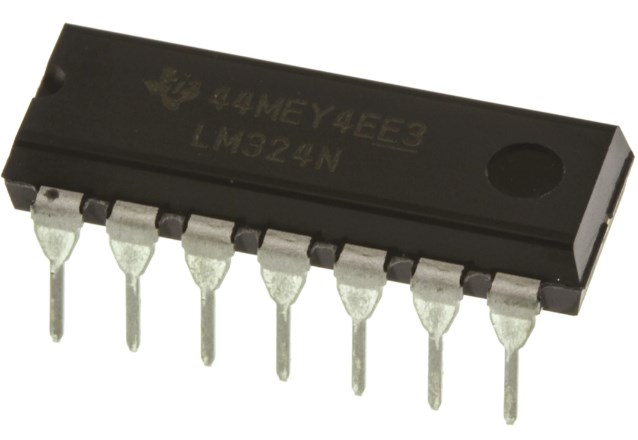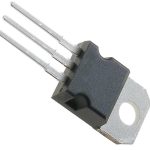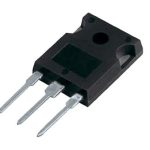LM324N is an incredibly versatile integrated circuit (IC) that has gained popularity in various applications over the years. This quad operational amplifier has become a go-to choice for engineers and hobbyists alike, thanks to its exceptional performance and ease of use. In this article, we will delve into the key features and functions of the LM324N, providing a comprehensive understanding of its capabilities and potential applications.
Introduction to LM324N

LM324N is an integrated circuit that belongs to the LM324 series of operational amplifiers (op-amps). It is widely used in various electronic circuits due to its versatility and reliability. The LM324N chip consists of four independent op-amps, making it suitable for applications requiring multiple amplification stages or signal conditioning. Its low cost, ease of use, and availability make it a popular choice among electronics enthusiasts and professionals alike.
Importance and Applications
The LM324N’s ability to operate from a single power supply and its wide input voltage range make it suitable for both analog and digital circuits. Its reliability, stability, and low power consumption further enhance its importance in various electronic designs.
It is commonly used for amplification, filtering, and signal conditioning purposes. The chip’s versatility allows it to be used in audio amplifiers, active filters, voltage comparators, oscillators, and many other electronic systems.
LM324N Datasheet and Pinout
The LM324N datasheet contains essential data that engineers and designers need to understand before incorporating the LM324N into their circuits. The datasheet includes information on voltage range, current consumption, gain bandwidth product, input and output voltage ranges, and other relevant parameters. Additionally, it provides guidance on the recommended operating conditions, such as supply voltage and temperature ranges, to ensure optimal performance.
The datasheet also provides information on the maximum power dissipation, thermal resistance, and recommended operating temperature range. Designers must ensure that the chip does not exceed its specified temperature limits to prevent overheating and potential performance degradation. Proper heat sinking and thermal management techniques may be necessary, depending on the application and power dissipation requirements.
The pinout diagram of the LM324N illustrates the physical arrangement of the pins and their corresponding functions. The chip package typically consists of 14 pins, with each op-amp having its own set of input and output pins. Understanding the pinout is crucial for correctly connecting the LM324N in a circuit.
LM324N Pinout and Configuration
The LM324N has a 14-pin dual-inline package (DIP) that contains four independent operational amplifiers. The pinout diagram of the LM324N shows the physical arrangement of the pins and their corresponding functions. Each op-amp has two input pins, an inverting (-) and a non-inverting (+) input, and one output pin. The remaining pins include power supply connections, offset nulling pins, and a common mode input voltage range.
Designers must understand the pinout diagram and the functions of each pin to properly connect the LM324N in a circuit.
- The inverting and non-inverting input pins are critical to the operation of the op-amp and must be correctly connected to achieve the desired amplification or signal conditioning.
- The power supply pins provide the necessary voltage and current to operate the chip, while the offset nulling pins enable users to adjust the input offset voltage.
By following the connection guidelines provided in the datasheet, designers can ensure proper functionality of the LM324N in their circuits.
Common Circuit Configurations using LM324N
Some of the most common circuit configurations using the LM324N include non-inverting amplifiers, inverting amplifiers, summing amplifiers, and active filters. In non-inverting amplifiers, the LM324N is used to amplify a signal without changing its polarity. Inverting amplifiers, on the other hand, invert the input signal and amplify it. Summing amplifiers combine multiple input signals and amplify the resulting output. Active filters use the LM324N to filter out unwanted frequencies from a signal.
LM324N Op Amp: Functionality and Features

An operational amplifier (op-amp) is a high-gain electronic amplifier that amplifies the difference between two input voltages. The LM324N contains four independent op-amps, each with a gain bandwidth product of 1 MHz. The op-amps have a high input impedance and a low output impedance, making them suitable for use in many applications.
The LM324N op-amp has several key features and benefits, including low input bias current, low offset voltage, and a wide common-mode input voltage range. It also has a low supply current of approximately 0.8 mA per amplifier, making it a suitable choice for battery-powered applications.
LM324 vs. LM324N: Comparison and Differences
The primary distinction lies in their packaging. The LM324 is available in various packages, including surface mount (SMD) and small outline integrated circuit (SOIC), while the LM324N specifically refers to the DIP package version.
In terms of electrical characteristics, the LM324 and LM324N exhibit similar performance specifications. They both have four independent op-amps with a gain bandwidth product of 1 MHz. The input bias current, offset voltage, and other key parameters are also comparable. However, it is essential to consult the datasheets for each specific version to understand any subtle variations in electrical characteristics that may exist.
When choosing between the LM324 and LM324N, several factors should be considered.
- Firstly, the availability of the desired package type is crucial. If a specific package is required for a particular circuit board layout or assembly process, it may determine the choice between the two versions.
- Additionally, cost considerations and supplier availability might influence the decision. Designers should also verify the suitability of the chosen version for their intended application by examining the datasheets and consulting application notes.
LM324A vs. LM324N: Choosing the Right Version
The LM324A is an enhanced version of the LM324, offering improved electrical specifications such as lower input offset voltage and lower input bias current. These improvements result in better precision and accuracy in amplification and signal conditioning applications. The LM324A is particularly suitable for applications requiring higher levels of precision.
On the other hand, the LM324N is the standard version of the LM324, offering reliable performance at a lower cost. It is widely used in various applications where high precision is not a critical requirement. The LM324N is commonly employed in audio amplifiers, active filters, and general-purpose signal conditioning circuits.
When selecting between the LM324A and LM324N, it is essential to consider the specific requirements of the application. If precision and accuracy are paramount, the LM324A may be the preferred choice. However, if cost-effectiveness and general-purpose performance are more important, the LM324N would be a suitable option.
LM324N Chip: Maintenance and Troubleshooting
When handling the LM324N chip, it is essential to avoid electrostatic discharge (ESD) by using proper grounding techniques and handling tools. The chip should be stored in an anti-static container or bag to prevent damage from static electricity. During installation, care should be taken to ensure proper orientation and alignment of the chip with the circuit board.
Common issues that may occur in LM324N-based circuits include oscillation, noise, and instability. Troubleshooting techniques such as adjusting feedback resistor values, adding bypass capacitors, and checking power supply voltages can help diagnose and resolve these issues. Additionally, simulation tools can aid in identifying potential issues before prototyping or production.
Regular cleaning of circuit boards, inspection of components for damage or signs of wear, and monitoring of power supply voltages can all contribute to preventing issues and prolonging the lifespan of the circuit.
Conclusion
The LM324N is a highly versatile and reliable integrated circuit that offers numerous benefits to engineers and enthusiasts. Its exceptional performance, ease of use, and wide range of applications make it a go-to choice for countless electronic projects. Understanding the capabilities and functions of the LM324N can greatly enhance your ability to design and troubleshoot circuits effectively.



